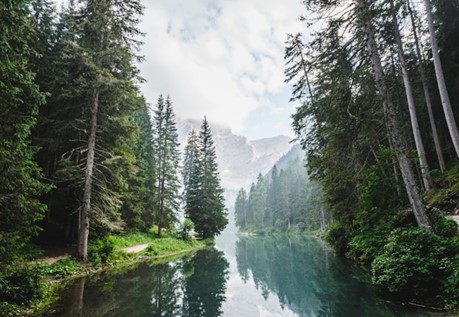Bryce Babson of Maine is a maritime industry professional, holding a 1600GT/3000 ITC Master upon Oceans with Master of Towing, Third Mate, STCW 95 & OICNW, and DP Unlimited licenses. With a Bachelor of Science in Small Vessel Operations from Maine Maritime Academy, Bryce combines academic knowledge with practical experience. In the following article, Bryce Babson delves into various approaches to conserving public lands while ensuring sustainable access for recreation, tourism, and outdoor activities.
Public lands are vital natural resources that provide habitats for diverse wildlife, offer recreational opportunities for millions of people, and contribute to the overall well-being of communities. However, as population growth and development continue to encroach upon these areas, the need for effective conservation strategies becomes increasingly apparent.
By exploring conservation easements, land trusts, and public-private partnerships, we can better understand how to preserve these precious landscapes for future generations. Moreover, by acquiring land through purchase or donation, land trusts can establish nature reserves, wildlife corridors, and recreational spaces that are permanently protected from development. These protected areas serve as havens for native flora and fauna, mitigate the impacts of urbanization, and provide opportunities for outdoor recreation and education. These partnerships bring together government agencies, nonprofit organizations, businesses, and local communities to collaborate on conservation initiatives, pool funding, and share knowledge and best practices. By combining public funding with private donations and expertise, these partnerships can achieve greater conservation outcomes than any single entity acting alone.
Overall, by delving into the mechanisms of conservation easements, the work of land trusts, and the power of public-private partnerships, we gain a deeper understanding of how to effectively preserve our natural landscapes for the benefit of future generations.
Bryce Babson Discusses Conservation Easements
One effective strategy for preserving public lands is the use of conservation easements. A conservation easement is a legal agreement between a landowner and a land trust or government agency that permanently restricts certain activities on the property to protect its conservation values.
Bryce Babson of Maine explains that these easements can prevent development, limit logging or mining, and preserve critical habitats for wildlife. By voluntarily entering into a conservation easement, landowners can receive tax benefits while ensuring that their land remains protected in perpetuity. Conservation easements are valuable tools for safeguarding public lands while respecting private property rights.
Land Trusts
Land trusts play a crucial role in conserving public lands by acquiring and managing properties for conservation purposes. Bryce Babson of Maine explains that these nonprofit organizations work with private landowners, government agencies, and other stakeholders to identify and protect ecologically significant areas. Land trusts can acquire land through donation, purchase, or conservation easements, and they often engage in habitat restoration, invasive species management, and public education efforts. By partnering with land trusts, communities can leverage their expertise and resources to preserve natural areas and enhance recreational opportunities for residents and visitors alike.

Public-Private Partnerships
Public-private partnerships offer another avenue for conserving public lands while promoting sustainable access and economic development. These collaborations involve cooperation between government agencies, private businesses, nonprofits, and community groups to achieve shared conservation goals.
Bryce Babson reports that public-private partnerships can fund conservation projects, develop recreational amenities, and support sustainable tourism initiatives. By pooling resources and expertise, these partnerships can address complex challenges such as habitat fragmentation, water quality degradation, and overcrowding in popular recreation areas. Additionally, by fostering collaboration and innovation, public-private partnerships can unlock new opportunities for conservation and recreation on public lands.
Maintaining Sustainable Access
While the conservation of public lands is undeniably crucial, it is equally important to ensure sustainable access for recreational and outdoor activities. Sustainable access involves carefully managing visitor use to minimize environmental impacts while still allowing for enjoyment and safety. This can be achieved through various measures, including setting visitor use limits, establishing designated trails and campsites, and offering educational programs on Leave No Trace principles.
Additionally, sustainable access requires investment in infrastructure such as parking areas, trailheads, and restroom facilities to accommodate visitors while minimizing damage to sensitive habitats. By striking a balance between conservation efforts and sustainable access, communities can effectively preserve the ecological integrity of public lands while simultaneously providing opportunities for outdoor recreation and tourism, ensuring that these natural spaces remain accessible and enjoyable for generations to come.
Conclusion
Bryce Babson recounts that preserving public lands is a shared responsibility that requires collaboration, innovation, and a long-term commitment to conservation. By employing strategies such as conservation easements, land trusts, and public-private partnerships, communities can protect natural landscapes, safeguard wildlife habitats, and enhance recreational opportunities for generations to come. By maintaining sustainable access and fostering a sense of stewardship among visitors, we can ensure that public lands remain vibrant and accessible for all to enjoy. Through thoughtful conservation efforts and responsible management practices, we can preserve the ecological and cultural heritage of our public lands while promoting their sustainable use and enjoyment.


